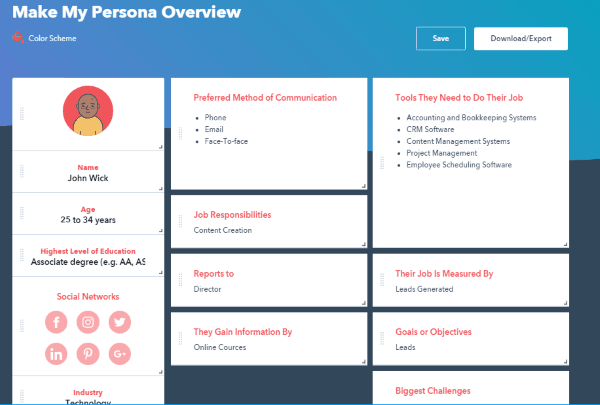Deploying a successful content marketing strategy for your company can seem challenging.
You have to work with the heads of all the departments in your company to get buy-in on the overall vision of what content marketing means to your organization and how it can positively impact your company’s bottom line.
You have to decide what types of content will resonate the most with your ideal clients. And finally, you have invite employees to collaborate on this initiative, helping them understand the key objectives and getting them excited about the creative process.
And if you think those internal struggles are the end of it, think again. Content marketing is becoming more popular and more popular, and your competitors are more than likely going through the exact same exercises you are.
Here’s a quick video that shows how to steal seo traffic from competitors:
The truth is, there is more competition than ever. According to the Content Marketing Institute, B2B companies are investing heavily in content marketing. 90% percent of them put their audience’s informational needs ahead of their company’s sales and promotional messages.
The stakes have never been higher, and the success or failure of your strategy all revolve around your Content Strategy Roadmap.

The first step to getting a leg up on the competition is to have a reliable, smart content marketing plan in place. If you’re having trouble planning or need some fresh ideas to include in your plan, we have some great tips to help you get started.
In this article, we’ll cover:
- What content strategy is
- Why your business needs a content marketing plan
- The exact steps you will need to take to create your strategy
What Is Content Strategy?
Content strategy refers to the management of pretty much any tangible media that you create and own. It could be written, graphical, video-based, audio-based, and more.
These are pieces that your company creates to show the depth of your expertise and to help establish you as the thought leader in your industry.

If you think this description sounds a bit broad, you are right. Because of this, good content strategies are well planned, consistent, and have purpose. There are some key things to take into account when determining your content strategy:
Have You Built Proper Customer Personas?
If you haven’t built out customer personas, the first thing you need to do is go through the exercise of determining who your ideal customers are. The truth is you most likely are going to have more than one persona, and that is okay.
Customer personas are semi-fictional accounts of your ideal customer(s). A persona describes who the person is, their background, their current circumstances, their goals, and their challenges.
If you need some help getting started, try the Hubspot persona tool:

These personas are going to be the blueprint for the type of content and the tone of the content you are going to create in your strategy.
As a result, you will no doubt have many types of content you are creating and many different channels you are delivering this content to. Each type of content and each different channel will serve one of your persona groups. Splitting content and channels ensures that you are engaging all of your ideal prospective customers.
What Does This Content Mean For Your Audience?
The most successful content is considered not only relevant but value-added to the ideal prospective customer you are targeting.
If you created your persona groups correctly, you can reasonably rest assured that your product or service solves a pain point or need your prospective customer is looking to solve.
A great content strategy tells the story of how your product or service is going to solve that challenge or need your prospective customer has.
What Is Your Value Proposition?
Even though your product or service is excellent and even though everyone on your team is committed to making it the best possible, the fact of the matter is you have competitors. Those competitors likely have a very similar offering to yours.
Because of this, you need to show your ideal prospective customers why they shouldn’t even think of considering products or services from one of your competitors.
This is where marketers often make a mistake. Demonstrating your value proposition is not using facts and figures from your sales materials. Instead, you actually want to double down and lean heavily into content.
Here are some tips to nailing your value proposition:
So in addition to telling that story of how your product or service is going to solve a challenge or need of your ideal client, you need to demonstrate the depth of your knowledge on the topic.
This establishes in the mind of the potential customer that you are not only worth it, but you are the thought leader in your industry.
Why You Need A Content Marketing Strategy
Dollar for dollar, content marketing is the most cost-effective way a business can generate website traffic and get new leads into their pipelines.
The more content you create, the higher the chances you are going to show up in online searches your ideal customers are performing. Click To TweetThe more content you create, the higher the chances you are going to show up in online searches your ideal customers are performing.
This gives you more opportunities for them to read your content, think of you as the expert in that area and then fill out a landing page or web form to receive a free item of value (a lead magnet to an ebook, infographic or downloadable PDF for instance) to become a lead.
You can also repurpose this content, promoting it on your social media properties or digital ads to help educate cold prospects that fit the personas of your ideal customers and generate additional brand awareness.
How to Create a Content Marketing Strategy
When creating your content marketing strategy, there are a few key steps you need to take:
What are your goals for this strategy?
The first thing you need to determine is what the desired outcome of this strategy is going to be. Why are you creating the content? If the content performs well, what does it mean to the overall goals of your company?
This is an important step as inevitably while you are carrying out your strategy, somebody in your company will come to you with an idea for a new piece of content or something else that wasn’t originally put into your original strategy roadmap.
The trick to staying on track is never doing things just because they are the newest trend, or because the CEO really likes them. Ask yourself how implementing that particular piece of content would contribute to this strategy and your overall goals as a company. If you can’t see how the two align, it’s not something that should be included in your roadmap.
Do Your Goals Align With Your Buyer Persona(s)?
It’s equally important not to forget your buyer persona(s). Again, these are the blueprint to your ideal customers. To develop a successful strategy, you need to make sure that everything in your strategy lines up with these personas and will be considered timely, relative and value-added by your ideal prospective customers.
If you find your goals aren’t aligned with your buyer persona(s), you need to either reexamine your persona(s) or revisit your strategy goals. At the end of the day, the two need to line up.
Determine Which Types of Content you Want to Create
There are a variety of options out there when it comes to the types of content you can create. The first consideration, of course, should be where your persona groups hang out. For instance, if your persona is most likely to be on Facebook, creating podcasts and posting them on iTunes isn’t going to help your campaign.
You want to be where they are giving them the type of content they are most likely to consume. And trust us, there are many places they could be. Here are some of the most popular content formats you should be considering.
- Blog posts
- Ebooks
- Case Studies
- Infographics — Check out or infographic on video marketing
- Videos
- Podcasts
- Social Media
- Instagram — Read this blog to learn how to best use Instagram
- Snapchat
- YouTube
Publishing and Managing Your Content
Your marketing plan should go beyond the types of content you’ll create. It should also cover the scheduling and organization of your content. With the help of an editorial calendar, you’ll be on the right track for publishing a well-balanced and diverse library of content on your website.
Next, create a social media content calendar so you can promote and manage your content on other sites.
Following all these steps will give you a very good start to creating the perfect Content Strategy Roadmap. While it does take time, lots of organization, and creativity to run a successful content marketing strategy, the hard work has a payoff. You will become the thought leader in your industry, and you will always have a steady stream of leads coming to your website and entering your pipeline.
How Do You Organize and Prioritize Content?
Are you building a content roadmap or editorial calendar to manage your marketing initiatives? What’s your strategy and how are you looking to measure and improve in the near future.


1 Comment
Pingback: Cómo Crear una Estrategia de Video Marketing | Raw Shorts